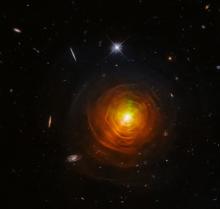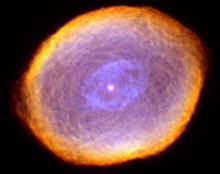Listen to today's episode of StarDate on the web the same day it airs in high-quality streaming audio without any extra ads or announcements. Choose a $8 one-month pass, or listen every day for a year for just $30.
You are here
Lepus
Lepus is a faint constellation with some impressive stars. The rabbit scampers below the feet of Orion, who chases it across the sky.
The rabbit’s brightest star is Arneb, from an Arabic name that means “the hare.” It’s not that much to look at. But that’s only because it’s perhaps 2200 light-years away or farther. The fact that it’s visible to the eye at all means that it must be quite impressive. In fact, it’s probably about 14 times more massive than the Sun, a hundred times wider, and perhaps 30,000 times brighter.
Arneb is quite young. Yet it’s already nearing the end of its life. In the next million years or so, it should explode as a supernova — a blast that’ll shine as brightly as billions of normal stars.
A star at the corner of the constellation is also impressive — not just for its size and brilliance, but for its color. R Leporis is one of the reddest stars around. In fact, it’s also known as Hind’s Crimson Star. That’s in honor of its discoverer, J.R. Hind, who said it looked like a drop of blood on a black field.
The color comes from carbon at its surface. The star is old and bloated, and giant bubbles of gas carry carbon from its core up to the surface. Carbon compounds absorb blue light, allowing the red to shine through.
R Leporis pulses in and out like a beating heart. When it’s at its biggest, it’s barely visible to the unaided eye. But you need a telescope to see the rich color of this amazing star.






